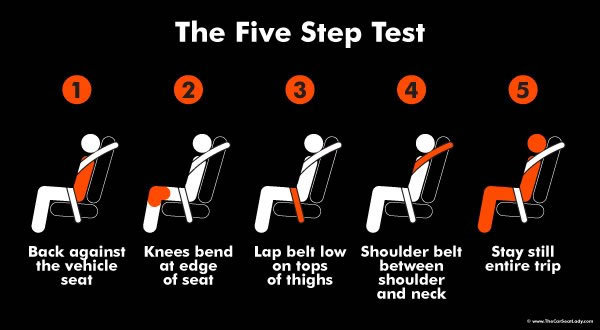- Thread and anchor all harness straps to the child safety seat before use;
- Adjust the retainer clip so that it is at armpit level of the child’s body;
- Harness straps should be flat or untwisted and adjusted snugly so you cannot pinch any slack;
- Lap belt should be fitted low and snugly across the child’s hips – not across the stomach;
- Shoulder belts should not come across the child’s face or neck. Never place the shoulder belt under the child’s arm or behind its back.
Common Mistakes of Car Seat Installation:
- Not using the right child safety seats for a child’s size and age;
- Not placing the child safety seat in the correct direction;
- Incorrectly installing the child safety seat in relation to the vehicle’s air bags;
- Incorrect installation and secureness of the child safety seat to the vehicle seat;
- Not securing/tightening the child safety seat’s harness and crotch straps;
- Improper use of locking clips for certain vehicle safety belts;
- Improper fit of seat belts on children using a booster seat;
- Use of a defective or broken child safety seat.

Three Types of Booster Seats: High-back, Backless and Combination
- A backless booster should only be used if you have a built-in headrest or seatback in your vehicle that reaches above your child’s ears.
- Combination seats have a harness that can be used with young children, then removed for the seat to be used as a booster as the child grows.
- Booster seats must never be used with only the lap belt or with a shoulder belt placed behind a child’s back or under a child’s arm.

Children between the ages of 8 and 12 should be kept in a booster seat until they are big enough for a seat belt to properly protect them. Use the following illustration to determine whether a child is big enough to use a seat belt properly.

For A Seatbelt To Fit Properly:
- The lap belt must lie snugly across the upper thighs, not the stomach.
- The shoulder belt should lie snugly across the shoulder and chest and not cross the neck or face.
Even if your child is big enough to use a seat belt, it is still recommended that the child sit in the rear seat.
Frequently Check Condition Of The Seat To Make Sure Of The Following:
- The straps are not frayed or discolored and the webbing is free of wear;
- The buckles operate properly;
- The seat is free of cracks, bends and loose bolts and all necessary parts are included.
